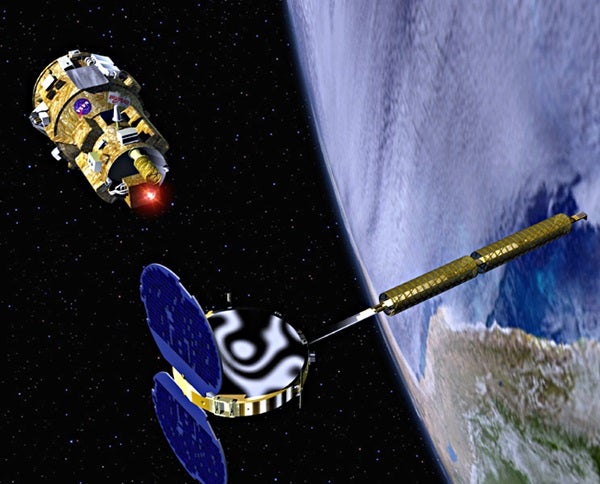The Demonstration of Autonomous Rendezvous Technology (DART) spacecraft mission ended prematurely late Friday, April 15, hours after a picture-perfect launch.
DART soared into orbit and, without guidance from ground controllers, located its target satellite in a higher orbit and maneuvered to within 300 feet (90 meters) of it. Then DART abruptly began its “retirement” or end-of-mission phase before it could perform the planned series of close approaches and fly-arounds of the target satellite.
According to mission manager Jim Snoddy of NASA’s Marshall Space Flight Center in Hunstville, Alabama, DART’s maneuvering fuel was used up at a much faster rate than intended. This, he said, is what triggered the onboard computer to cut short the test. As for why the fuel consumption was so high, Snoddy said he didn’t want to speculate at this point.
DART’s target spacecraft, called MUBLICOM (for Multiple Path Beyond-Line-of-Sight Communications), was launched in 1999. It carries retro-reflectors to enable spacecraft to approach it using laser guidance, such as DART was meant to do.
NASA has convened an investigation board to examine the cause of the mishap. DART’s mission, planned for launch in October 2004, cost $110 million. This is an increase of $15 million over what was budgeted.
The cost overruns came from launch delays. They also came from additional engineering tests that proved necessary when the manufacturer of the launch rocket, Orbital Sciences Corporation, revealed that DART would experience unforseen high accelerations on launch.
DART’s goal, an essential ingredient in the United States vision for space exploration, was to test automated rendezvous techniques for use by future spacecraft. The mission’s slogan is “Putting a computer in the pilot’s seat.”










